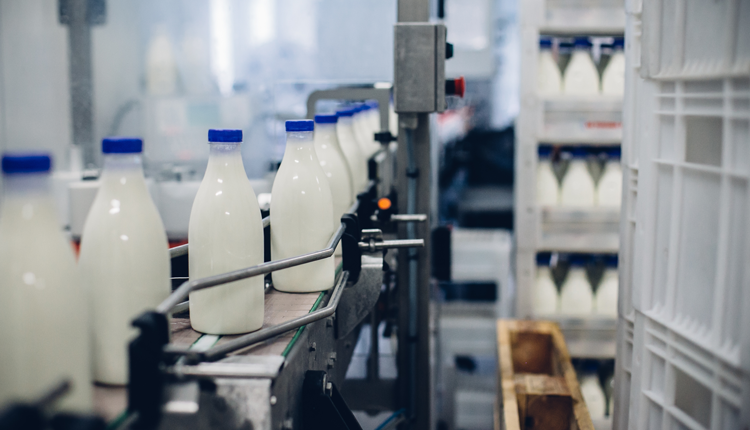

- $1.60 per cwt. below the first-half of 2017
- $1 per cwt. under 2015
- Only 65 cents per cwt. above the very weak first half of 2016
The situation with dairy producer margins was even bleaker. As measured by the Margin Protection Program for Dairy (MPP-Dairy) margin calculation, the average margin from January to June 2018 was $2.50 per cwt. below the first half of 2017, 70 cents per cwt. under 2015, and a little more than 10 cents a hundredweight above the first half of 2016.
There was light
The first half of 2018 had also produced some signs of positive improvements in the dairy outlook. Milk production growth had been moderating and was being outpaced by growth in total demand. Monthly U.S. dairy export volumes were running well ahead of their respective levels during the three prior years.
This optimism reached its height in late May, when futures signaled a significant price recovery would happen in the second half of the year.
The light dimmed
Then, in short order during the first half of June, the announcement came of retaliatory tariffs by Mexico against U.S. cheese imports. On top of that situation, China announced retaliatory tariffs against all U.S. dairy imports. These developments initiated a significant drop in the dairy futures prices, which presaged the broad market retreat that followed. Domestic dairy markets continued to languish for the remainder of the year.
Instead of a recovery year, 2018 turned out to be a year during which milk prices would likely come in at their lowest average level since the price disaster year of 2009. Even more damaging, the average MPP-Dairy margin for the year would be the lowest since 2009 and the drought disaster and drought recovery years of 2012 and 2013.
This rather sudden souring of the promise that price relief might be within reach last year has been worse than disappointing for dairy farmers. It has pushed the financial outlook for many from hardship to crisis, leaving a growing trail of forced exits.
How could last year turn so sour so quickly and so decisively? And has a price recovery been merely postponed temporarily until this year?
The tariffs were clearly a precipitating event, but they also seemed to worsen some deeper underlying weakness, because prices had become even worse by the end of the year than the initial market reaction they provoked.
Fuller fat milk
To see what this might be, here are some basic facts: Milk production growth, while slowing, has been effectively underreported because the average yield of milk solids has grown significantly in the past several years. As a result, the total milk solids produced by farmers have grown year-over-year by fully half a percentage point faster than their production of liquid raw milk during both 2016 and 2017.
Milk solids, not liquid milk, determines the yield of most dairy products. So, the volume of total dairy products coming on to the market, and therefore affecting milk prices from the supply side, has grown faster than the standard milk production statistics would imply. Fortunately, this divergence between milk and milk solids growth did not carry over into the second half of 2018 and may no longer be a significant factor in the dairy outlook going forward.
As already mentioned, another important market indicator went from negative to positive last year. Growth in U.S. milk solids production outpaced growth in total commercial use of milk solids during both 2016 and 2017. But this reversed itself in 2018, when growth in demand exceeded production growth, powered largely by higher exports.
Taking a closer look at exports, while total export volumes were up significantly last year over the prior three years, the gains were primarily in dry skim milk ingredient products, such as skim milk powder and whey products. Exports of such products accounted for 82 percent of total estimated U.S. milk solids exported during the first 10 months of 2018.
Domestic prices of dry skim ingredients have a smaller effect on producer milk prices than do products such as cheese — exports of which were hurt by the retaliatory tariffs — and butter. While the enhanced export volumes caused U.S. prices of nonfat dry milk and dry whey to rise steadily throughout last year, butter prices remained relatively constant and cheese prices ended 2018 at their lowest levels of the year.
Cheese sales slid
This brings the discussion back to prices and spotlights cheese as the largest contributor to the weakened milk prices. Monthly average U.S. cheese exports to Mexico and China, under the new tariffs, were down by 30 percent in the second half of 2018 through October from their levels during the first half of the year. Mexico accounted for most of the lost volume. This contributed significantly to the 15 percent drop in total U.S. cheese exports over the same period.
Another factor contributing to the weaker cheese prices was a change in the supply-demand balance for American-type cheese. In particular, about three-quarters of that cheese was Cheddar, the product which has the largest effect on U.S. milk prices.
Total commercial use of American-type cheese rose more than 1 percent faster, year-over-year, than production of the same cheese during the first half of 2018. Then, production growth outpaced growth in total use by over 1.5 percent into the second half.
The 2019 horizon
Looking ahead to this year, as of the first week in December, the dairy futures prices were projecting a price recovery for butter and particularly for cheese, but one that would occur mostly during the second half of the year. At that time, the futures markets were anticipating an average milk price for all of 2019 that was $1.10 per cwt. higher than the average for all of 2018. By comparison, USDA’s monthly dairy outlook update for November showed a 90-cent per cwt. improvement in 2019 over 2018.
I sincerely hope these price forecasts turn out to be conservative. As it was, the futures, and USDA as well, were projecting the 2019 MPP-Dairy margins would remain above $8 per cwt. all year, but stay under $9.50 per cwt. for all but one or two months at the end of the year.
The newly passed farm bill raises the maximum coverage level under the renamed MPP-Dairy program to $9.50 per cwt. If the price and margin forecasts hold, the new federal dairy safety net program will provide helpful support to dairy farmers on their first 5 million pounds of milk production in 2019.


